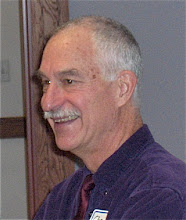I'm wanting to do something with my photographs - share them without the hassle of a more formal gallery show. For now, anyway. Enjoy. My thought for Integrity is something like the purity and honesty of nature, in all its facets, ugly and otherwise, it is in all regards, honest and straight forward.
Tuesday, September 27, 2011
Monday, September 26, 2011
Revisiting Multiage Portraits
 Multiage Portraits: Teaching and Learning in Mixed-Age Classrooms by Anne Bingham
Multiage Portraits: Teaching and Learning in Mixed-Age Classrooms by Anne Bingham(Written on the occasion of posting Portraits in my Goodreads account.)
A few nights ago, I was reading the first chapters of Naked Spirituality by Brian McClaren. McClaren is asking us to reclaim and enliven our spiritual lives by spiritual practice, the first of which is centered on the word, "Here." Something in his writing made me go back and read the introduction to Portraits. In the intro, I touch on teaching as something you are called to do (for the really great teachers) and I make the observation that in these classrooms, when children become absorbed in their learning, it is almost a spiritual experience. They feel and act within their very essence. I just touched on the point lightly. Now, almost twenty years later, having revisited the crystal clear descriptions of elegant everyday practice Peggy and Anne and Molly and Justine wrote about, and sensing again the power of being totally "into" what you are learning, I am more convinced than ever that I was right.
CR
I wrote this book along with Anne, Justine, Molly, and Peggy. It was an attempt to describe what good multiage teaching practices looks like. We did it two ways: I did a participant observation study of Anne's k-4 multiage classroom (Part 1. of the book) and each of the teachers wrote multiple essays describing how they approached their teaching day Part 2. of the book). Part 3. put Parts One and Two together through a reflection on the writing of Lev Vygotsky. The book sold 1300 copies. It is beautiful teacher writing, and the moment to moment interactions I describe in Part 1. aren't so bad either. The teacher-authors taught multiage in the old fashioned way. One class with a group of children who happened to be of different ages. This is not about how to teach "combined grades" or "combination classrooms" organized because of mismatched numbers of children at different grade levels. It's about teaching heterogeneous, family-grouped, collections of children, organized because of a philosophical commitment to good developmentally inspired teaching. Period.
View all my reviews
Wednesday, April 6, 2011
Animoto fun
Been playing around with Animoto, a way to make videos from simple to complex. This is a quickie I put together to explain a bit of Universal Design for Learning to an audience who glazes over as soon as they think they are going to see another powerpoint. What do you think?
UDL@UVM
UDL@UVM
Tuesday, January 11, 2011
It isn't just the words...
So much of what is being talked about relative to the killings in AZ has to do with the language of our devolving political culture. It's much more than the words themselves. Current neuroscience tells us that the emotions communicated by the manner in which words are spoken (think about the sounds of John Beohner's red-faced screams to congress after the health care bill passed) trigger anxiety and fear as much as the words themselves. It would be really interesting to have someone familiar with how the limbic system functions, particularly the role of the amygdala, come on Morning Joe and help make this point. The denials from both sides of the aisle that these murders were not linked to our political climate is simply not true. Our brains pick up messages in many ways, not simply through the words of communication. Like it or not, this research brings us perilously close to affirming our political climate indeed laid the base for these assassinations.
Subscribe to:
Posts (Atom)

